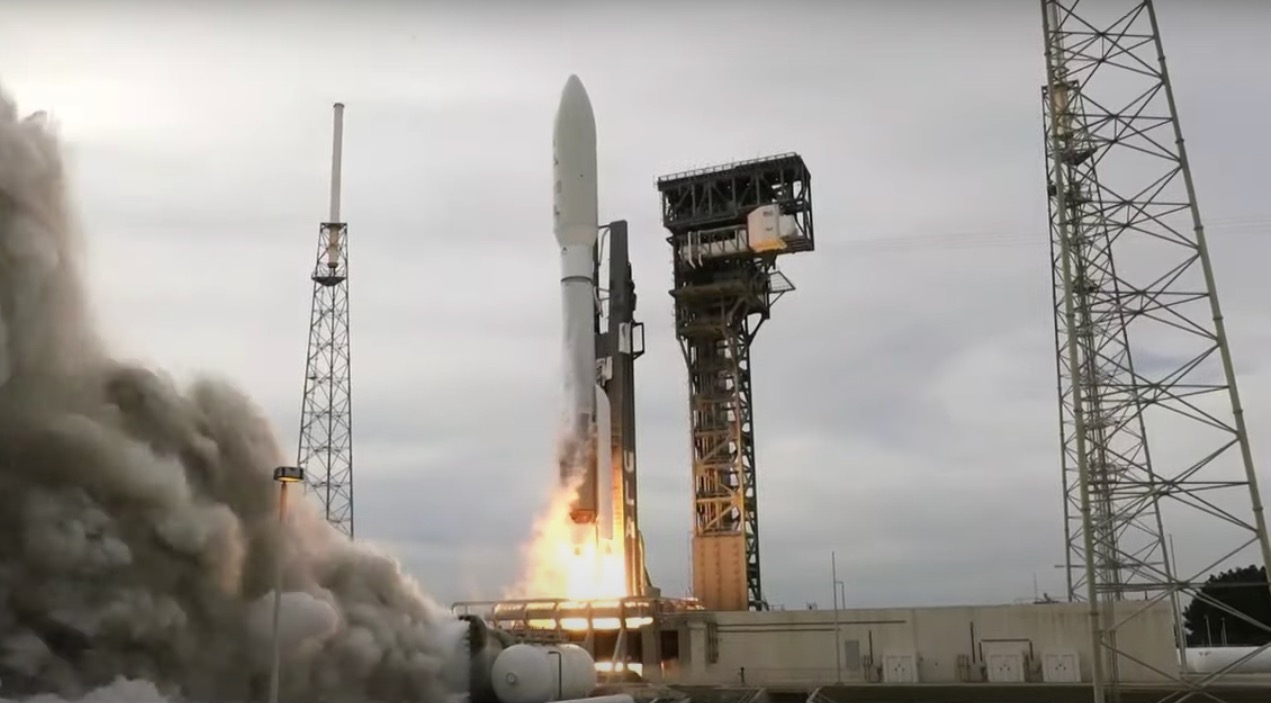A powerful United Launch Alliance (ULA) Atlas V rocket launched two "neighborhood watch" satellites for the United States Space Force on Friday (Jan. 21).
The Atlas V lifted off from Florida's Cape Canaveral Space Force Station at 2 p.m. EST (1900 GMT) Friday, carrying two identical Geosynchronous Space Situational Awareness Program (GSSAP) satellites to orbit.
If all goes according to plan, the rocket will deploy the two satellites around six hours and 45 minutes after launch. The GSSAP craft will then make their way to their final destination, a near-geosynchronous orbit about 22,300 miles (36,000 kilometers) above the equator.
Related: What is the U.S. Space Force?

The satellites are the fifth and sixth GSSAP spacecraft to take flight. ULA launched the first four on two different flights, one in 2014 and the other in 2016. Both of those previous missions employed Delta IV Medium rockets, which were retired in 2019.
GSSAP satellites help U.S. Space Command keep tabs on the traffic in geosynchronous orbit, where a satellite's orbital velocity matches the speed of Earth's rotation. This is a prized perch for weather, communications and surveillance satellites, because spacecraft there "hover" over the same patch of the planet continuously (the same longitude, anyway).
GSSAP satellites "provide neighborhood watch services in the Geosynchronous Earth orbit (GEO), improving flight safety for all spacefaring nations operating in that orbit," ULA representatives wrote in a mission description.
Get the Space.com Newsletter
Breaking space news, the latest updates on rocket launches, skywatching events and more!
"Enhanced position knowledge of satellites at that distance improves the ability to warn a spacecraft owner/operator if there is another object anticipated to approach too closely and create a hazardous situation," they added. "Data from the GSSAP will uniquely contribute to timely and accurate orbital predictions, enhancing our knowledge of the GEO environment and further enabling spaceflight safety including satellite collision avoidance."
Friday's flight was the first ever for an Atlas V in the 511 configuration — one that features a 5-meter-wide (16.5 feet) payload fairing, a single-engine Centaur upper stage and one solid rocket booster strapped to the rocket's side.
The 511 was the only Atlas V variant that had yet to fly, ULA representatives wrote in the mission description. But a close cousin of that version — the 411, which sports a 4-m-wide (13.2 feet) payload fairing — has flown half a dozen times, they added.
Editor's note: This story was updated at 2:30 p.m. EDT on Jan. 21 with news of successful liftoff.
Mike Wall is the author of "Out There" (Grand Central Publishing, 2018; illustrated by Karl Tate), a book about the search for alien life. Follow him on Twitter @michaeldwall. Follow us on Twitter @Spacedotcom or on Facebook.
Join our Space Forums to keep talking space on the latest missions, night sky and more! And if you have a news tip, correction or comment, let us know at: community@space.com.

Michael Wall is a Senior Space Writer with Space.com and joined the team in 2010. He primarily covers exoplanets, spaceflight and military space, but has been known to dabble in the space art beat. His book about the search for alien life, "Out There," was published on Nov. 13, 2018. Before becoming a science writer, Michael worked as a herpetologist and wildlife biologist. He has a Ph.D. in evolutionary biology from the University of Sydney, Australia, a bachelor's degree from the University of Arizona, and a graduate certificate in science writing from the University of California, Santa Cruz. To find out what his latest project is, you can follow Michael on Twitter.









